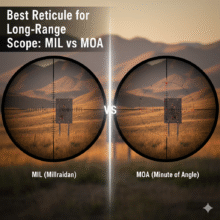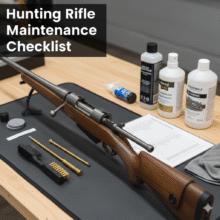How to Properly Clean and Maintain Your Firearm: A Comprehensive Guide

Table of Contents
Introduction
Firearm maintenance is an essential part of responsible gun ownership. Proper cleaning and care can ensure that your firearm functions safely and efficiently, while also extending its lifespan. In this informative article, we’ll walk you through the steps to clean and maintain your firearm, ensuring it remains in optimal condition. With a friendly tone and easy-to-follow instructions, you’ll soon become an expert in firearm care. Let’s get started!
The Importance of Regular Firearm Maintenance
Why Clean Your Firearm?
Regular firearm maintenance is crucial for several reasons. Firstly, cleaning helps remove fouling and residue that can accumulate over time, leading to reduced accuracy and potential malfunctions. Furthermore, proper care prevents corrosion and rust, which can damage the firearm’s components and weaken its structural integrity. Finally, regular inspection and maintenance allow you to identify any potential issues before they become more significant problems, ensuring your firearm remains safe and reliable.
Cleaning Supplies and Tools
What You’ll Need
To clean and maintain your firearm effectively, you’ll need a few essential supplies and tools. These include:
- Cleaning solvent: A solvent specifically designed for firearms will help remove fouling, residue, and other debris.
- Lubricant: A quality gun oil or lubricant helps protect your firearm from corrosion and ensures smooth operation.
- Bore brush: A brush designed for your firearm’s caliber or gauge will help clean the barrel effectively.
- Cleaning patches or cloth: These are used to apply solvent, lubricant, and to remove debris from the firearm.
- Cleaning rod: A rod helps you reach deep into the barrel, ensuring a thorough clean.
- Small brush or toothbrush: These are useful for cleaning hard-to-reach areas.
- Cotton swabs: Swabs can be used to apply lubricant in tight spaces.
- A clean, lint-free cloth: This is useful for wiping down the firearm after cleaning.
Optional Supplies
Some additional supplies can further enhance your firearm cleaning process. These may include:
- Cleaning mat or pad: A mat can protect your work surface and keep small parts organized.
- Bore snake: This tool can be used as an alternative to a cleaning rod and bore brush for a quick barrel cleaning.
- Gun vise or cradle: A vise or cradle can hold your firearm securely while you clean it.
The Cleaning Process
Disassembly
Before you begin cleaning your firearm, ensure it is unloaded and pointed in a safe direction. Next, consult your firearm’s manual for disassembly instructions. Most firearms require at least partial disassembly for cleaning, which may include removing the bolt, slide, or barrel. Always follow the manufacturer’s guidelines to avoid damaging your firearm or voiding any warranties.
Cleaning the Barrel
Once your firearm is disassembled, begin by cleaning the barrel. Apply some cleaning solvent to a bore brush or patch and run it through the barrel using a cleaning rod. Repeat this process several times to loosen and remove any fouling or debris. Next, use a dry patch to remove any remaining solvent and debris from the barrel. Finally, apply a thin layer of lubricant to a clean patch and run it through the barrel to protect it from corrosion.
Cleaning the Action and Other Components
Using a small brush or toothbrush and cleaning solvent, clean the action and other components of your firearm. Pay particular attention to areas where fouling or debris may accumulate, such as the bolt face, extractor, and chamber. Once the components are clean, use a dry cloth or patch to remove any remaining solvent. Apply a light coat of lubricant to the moving parts and any areas prone to friction or wear. Be sure not to over-lubricate, as this can attract dirt and debris, leading to malfunctions.
Reassembly and Final Inspection
After cleaning and lubricating all components, carefully reassemble your firearm according to the manufacturer’s instructions. Once reassembled, perform a function check to ensure everything is working correctly. This may include cycling the action, dry-firing (if safe for your firearm), and checking the safety mechanisms. If you encounter any issues, disassemble your firearm and inspect the components for damage or improper assembly.
Wiping Down the Exterior
Finally, use a clean, lint-free cloth to wipe down the exterior of your firearm. This removes any fingerprints or oil, which can cause corrosion over time. You can also apply a thin layer of lubricant or a silicone cloth to the exterior metal surfaces for added protection against rust and moisture.
Storing Your Firearm
Proper Storage Techniques
Proper storage is crucial in maintaining your firearm’s condition and ensuring its safety. Always store your firearm unloaded and in a secure location, such as a gun safe or lockbox. This prevents unauthorized access and protects your firearm from damage or theft. Additionally, store your ammunition separately from your firearm to further reduce the risk of accidents. Lastly, consider using a dehumidifier or moisture-absorbing packets in your storage area to prevent rust and corrosion.
Conclusion
In conclusion, properly cleaning and maintaining your firearm is essential for ensuring its longevity, performance, and safety. By following the steps outlined in this comprehensive guide, you can keep your firearm in optimal condition and enjoy a reliable, efficient shooting experience. Remember, responsible gun ownership includes regular maintenance and care – make it a priority, and you’ll reap the benefits for years to come.







